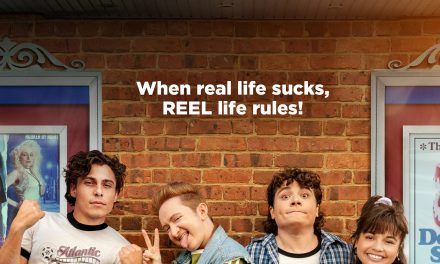NEON and Steven Soderbergh introduce fans of the paranormal to an entirely different kind of ghost story with Presence.
The feature, written by David Koepp, follows a family who recently moved to a new house in the suburbs. However, they soon become convinced they’re not alone in their home.
The film stars Lucy Liu, Chris Sullivan, Callina Liang, West Mulholland, and Eddy Maday.
One thing I want people to know going in is that Presence really isn’t a horror movie, despite it being marketed as one. It’s not packed with jump scares or gore or terrifying ghoulish monsters. If you go into Presence thinking you’ll be on the edge of your seat, afraid of what lurks around every corner, you’ll likely wind up disappointed. I definitely consider this movie more of a family drama with supernatural elements. I think acknowledging this is important to set and manage the viewer’s expectations of the film.
Instead, Presence really focuses on exploring grief through the supernatural, turning the standard haunted house story around. Most notably, Soderbergh does this by literally telling the story from the point of view of the ghost itself. The entire film is shot with POV camerawork from the ghost’s perspective. Of course, this significant choice marks one of the key places audiences are likely to divide. Is the ghost POV a triumph of experimental filmmaking, and a novel lens to narrate a story? Or is it just gimmicky, less of an achievement and more of a distraction?

Personally, I land slightly more in the first camp, but it’s a fine line. What I enjoyed about this choice — beyond its general novelty, and Soderbergh’s commitment to making an entire film this way — is that it forces the viewer to piece together the family’s story and interpersonal dynamics bit by bit. It gives us a mystery to unravel — the grounded kind, not the supernatural kind. And experiencing these things piece by piece also made me more sympathetic to the ghost. A significant part of Presence is that ghosts are often confused; they may not know they’re dead, or who they were when they were alive, or why they’re trapped in a particular place or time. Framing the story from the ghost’s perspective underscores this point, giving the audience a better emotional tie to the spirit.
Of course, this can also be a bit of a double-edged sword. While the strict commitment to the ghost POV increases the audience’s connection to the haunter, it can create some distance between the audience and the living characters. This in turn can undercut some of the thrills and emotional resonance Presence shoots for.
Overall though, I enjoyed the way Presence unravels. It’s definitely a slow burner at the beginning; my viewing experience benefited from being in a theater, rather than at home where I probably would have let other things distract me. But it’s also a movie that ramps up rapidly right at the end. The escalation feels a bit out of place with how grounded the rest of the film feels; it comes across a little bit ‘Lifetime thriller.’ Still, I have to admit I was entertained.

Presence’s slow momentum and POV cinematography won’t work for everyone, especially those anticipating a more intense scare with their ghost story. However, for those who find themselves drawn into the mystery and suspense of its unique spectral perspective, it’s a compelling, emotional story blending the natural and supernatural stages of grief.
You can catch Presence in theaters now.

![Presence: A Haunted House Tale From A Ghostly Perspective [Review]](https://thathashtagshow.com/wp-content/uploads/2025/01/Presence-review-1280x640.png)


![DEAD DEAD DEMONS DEDEDEDE DESTRUCTION Ep. 12: Alien Revelations [Review]](https://thathashtagshow.com/wp-content/uploads/2024/08/2f3fd215-011b-414a-a490-2e5e71b72351-440x264.jpg)
![Heed Our Warning And Do Not Choose To Watch Netflix’s Choose or Die [Review]](https://thathashtagshow.com/wp-content/uploads/2022/04/277954420_734653047900686_3258804867541011895_n-440x264.png)
